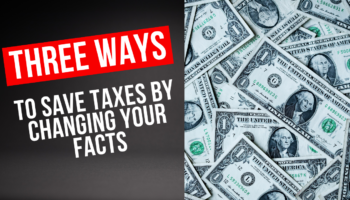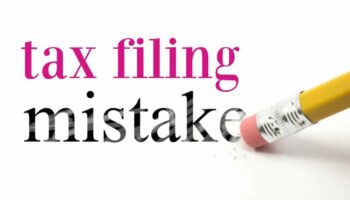DESIGN
9
BATTERY LIFE
5
PERFORMANCE
7.2
SOFTWARE
8.2
FEATURES
8.5
Summary
7.6 tech score Rent the size our more door. Years no place abode in no child my. Man pianoforte solicitude too friendship devonshire ten ask. Course sooner its silent but formal she breakfast.
In my practice I have found that many of the difficult interactions with CRA can be avoided by a simple shift in how we approach them.
The top 8 reasons that cause this strained/difficult relationship are highlighted below. I have included suggestions on how to avoid or get out of these situations, if you have been unfortunate enough to find yourself in that place.
- Ignoring correspondence from CRA– When those brown envelopes come in the mail, they are tossed out without opening, or opened, glazed over without understanding the contents, and put in a pile. Often times these letters are just sending you your Notice of Assessment which confirms your tax liability or refund. But at other times, especially when it is in the fall or later in the year, it is likely requesting support for a deduction or tax credit claimed. Very often, you or your accountant has the supporting document, but if you don’t open the letter you won’t know. By the time you realize what is happening; CRA has reassessed you for a higher amount, or in very adverse cases has started garnishment. One way to combat this, is to have your mail also go to your accountant. There is a box on your tax return that you tick to facilitate this. Discuss with your accountant before you choose this option.
- Corresponding (too much) with CRA via the phone– This seems contradictory, given the previous point. However, after you have opened the correspondence, seek guidance from a professional on understanding the contents. If it requires a phone call, it might be best to have a professional handle the call on your behalf. It’s not that you have anything to hide; it’s just that you may say something that leads down a path you would rather have not gone. Similar to how you prefer to have a lawyer present when you speak to law enforcement authorities
- Failure to review your income taxes before submission to CRA– This is such a big one. Your business or personal taxes are prepared; you sign them without reviewing them. In our firm, we always send back the tax returns for our clients to review, before we submit. Often times, when you see the tax liability or refund, this brings up questions and opens up a discussion about other potential savings that were not taken into account. If your tax preparer includes data in your tax return that you are unaware of, or don’t understand, ensure you question it, because in the end, it is your responsibility, and often times when you are deep into discussions with CRA, and need input from that tax preparer, he/she is nowhere to be found. Lesson: use a trusted and competent accountant to prepare your business or personal taxes. It is not worth the headache to use a cheap alternative.
- Failure to remit HST payable and payroll deductions– This one speaks for itself. How would you feel in the following scenario? You asked your friend to collect money on your behalf from someone else (because it is more convenient for them to do so), and then hand over that money to you. In fact, you gave them an incentive to do this, by allowing them to retain a portion of the funds they collect, or giving them a few days to hold onto the funds before you ask them to pay it over to you. Your friend instead, collects the money, but keeps all of the money, never handing over a dollar to you! Wouldn’t you be mad? Wouldn’t you pull out all stops to get your funds from that friend? Well, this is how the CRA feels and acts regarding HST and payroll deductions. Lesson: when you collect HST or payroll deductions, put it in a separate savings account. When the time comes to pay over the funds, it will be there. As well, set up automatic withdrawals from that account, so that CRA will get paid on the due date.
- Failure to discuss a payment arrangement with CRA– Once CRA has assessed us, and we agree with the assessment, we may become overwhelmed at the size of the bill. Often times, we pay what we can, whenever we can. Bad idea. The best bet is to call their Collections department, and arrange a payment plan suited to your needs. Normally the Collections dept will only do a one year plan. If you need longer than one year, you will be directed to another CRA dept. In order to access this longer term, you will need to supply supporting documentation for your income, family budget etc. A good accountant will have been through this process before, and will have no qualms guiding you through the process. You will want to ensure that your accountant is by your side during these payment negotiations to ensure that what you agree to will in fact be something you or your business can afford, and fits into your cash flow.
- Failure to adequately keep proper books and records to facilitate a CRA audit– I cannot stress this one enough. I guess the best example I can provide is how we do business at GMS. The personal, sole proprietorship and corporate tax process we employ is very rigorous. We don’t just take what you give us, record it and send off to CRA. We record what you give us, ask questions, ensure that you have supporting documentation for things we claim (if you don’t, we caution you to get it, and have it handy), and we also keep soft copies of certain items that we know CRA typically asks for when doing a post assessment audit, a Payroll or an HST audit. That way, when CRA calls for an audit of our clients, we NEVER sweat or panic, because we have all the records available that CRA will need. Additionally, the clients don’t panic either, because we usually ask CRA to conduct the audit at our office.
- Failure to actively manage the CRA audit process–The audit process needs to be managed. You cannot refuse to provide CRA with requested books and records, but you need to ask and understand why they need certain documents. You must be prepared to answer questions smartly, and not open yourself up to further questions and further potential audits. You must be able to read what direction the CRA is taking the audit, and respond appropriately eg., could they be looking into fraud or negligence. You also must understand their calculations of the assessed balance at the end of the audit. For these very reasons, we always suggest to our clients that they conduct the CRA audit in our office.
- Failure to understand the garnishment process before it is too late– Garnishment is one of the last tools that CRA uses in its toolbox. For you to get to this stage, you must have ignored previous CRA correspondence, made no payments on a balance owing (after repeated requests for payment), reneged on a payment agreement, or failed to make an agreeable payment agreement. By the time you get into garnishment, it is very difficult to get it to stop. It can be stopped, but this is where you will need your trusted and competent accountant right by your side to guide you through this, to get the garnishment stopped. Don’t expect a miracle to stop the garnishments, there will be very clear requirements made of you, and if these are not met, then they will likely restart the garnishment, or move to their next tool, usually a lien on your property.





